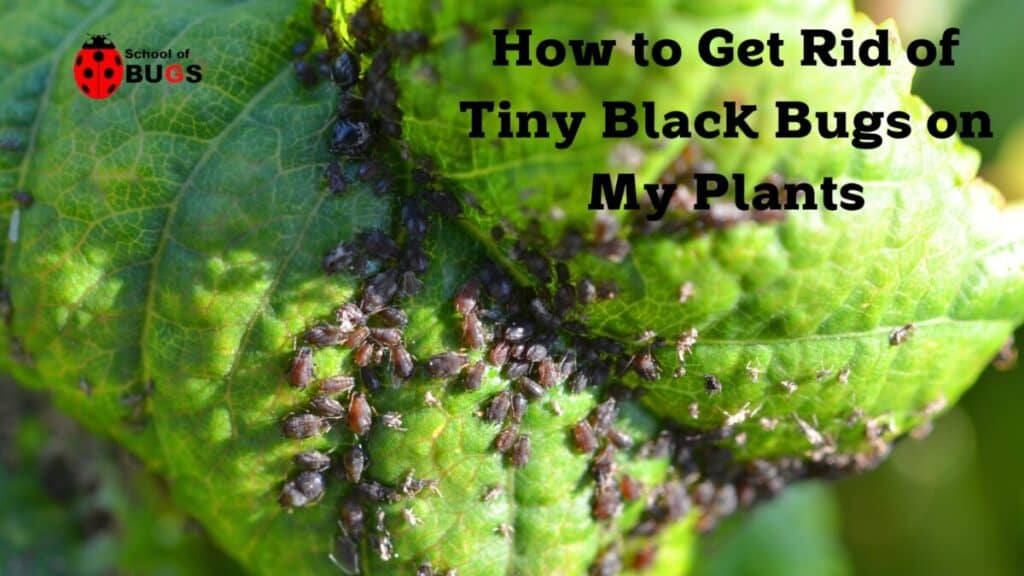
Anytime you have a garden or plants you care for, it can be a real nuisance to find tiny black bugs hanging around.
Tiny black bugs can be anything from thrips to spider mites or black aphids, and they can all damage your plants and even kill them. So, how do you eliminate tiny black bugs on your plants?
There are several ways, and it requires some basic knowledge of these bugs and how to identify them. Being proactive is also important so you can try to prevent these pesky insects from getting to your plants in the first place.
In this article, I will help you to identify these tiny black bugs so you can defeat them.
Identifying Tiny Black Bugs
Identifying tiny black bugs is vital to saving your plants. You’ll notice that little black bugs lurk under leaves or swarm around your plants but some you can hardly see. Some live in the soil, and some look like minuscule specks of dust.
Let’s look at some of these tiny black bugs that wreak havoc and how you can eliminate them.
Black Aphids
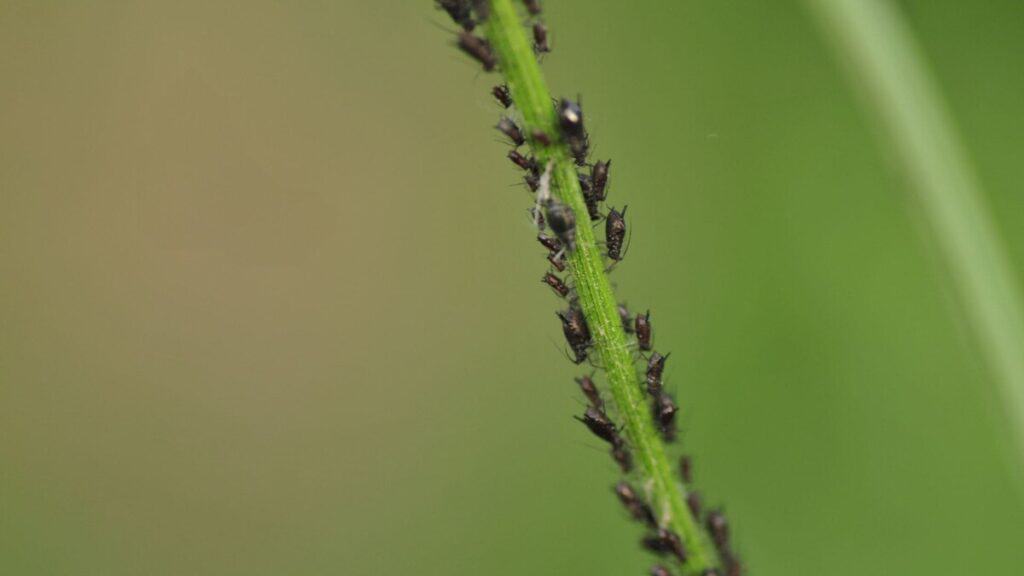
Black aphids feed off of the sap of several plants. You can usually spot large numbers of them on the bellies of your leaves.
They will appear as clusters of specks that almost look like giant pieces of pepper. They tend to hang out around the leaf stem or the veiny parts of the leaves.
You may also notice them in your greenhouse on your tomato plants or other crops. You may hear black aphids referred to as plant lice or blackflies.
These tiny bugs are so small that their features can not be seen without a magnifying glass. They have a pear-shaped body, two antennae, and six legs and measure only 3mm long.
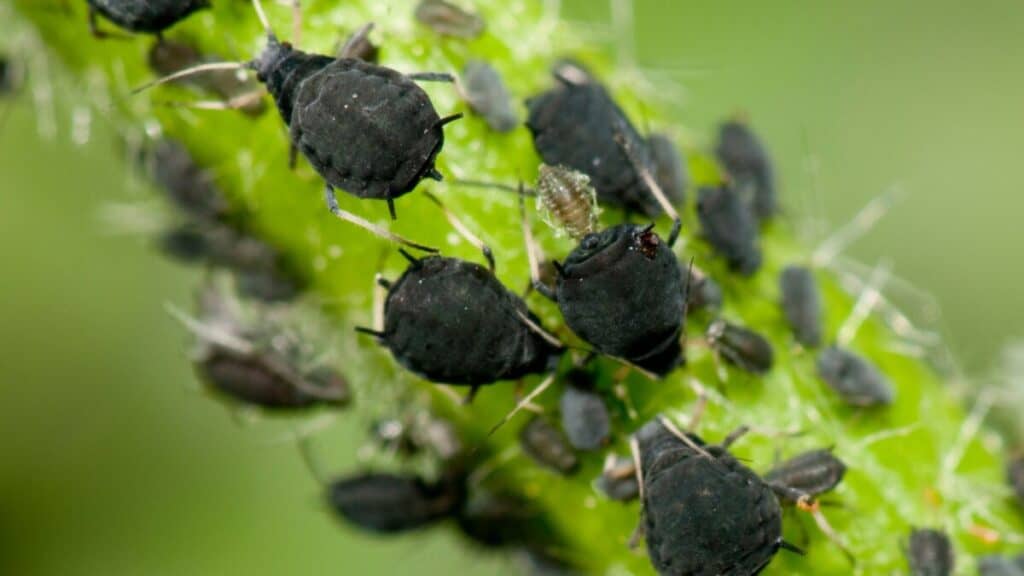
The best way to identify black aphids is by the damage they cause to your plants. Because they suck the sap out of the leaves, the leaves become curled and their growth stunted.
What is worse is that the black aphid excretes a sticky, sweet fluid called honeydew that attracts ants. Because the ants use this fluid for food, they tend to protect the aphids from other predators.
The honeydew also causes black fungal growth, which you will notice as a black soot-like substance on the leaves. While this fungal will not kill the plants directly, it will interfere with their growth cycle.
Ways to Get Rid of Black Aphids
There are several ways to eliminate black aphids and stop an infestation. Check out these ways to stop them from taking over your beloved plants.
- Vinegar
- Dish Detergent
- Garden Hose
- Insecticide
Distilled White Vinegar

You can use a solution of white vinegar with a ratio of one to three, with water. Mix these in a spray bottle and spritz equally over the leaves of your plants, focusing on the underside of the leaves where the aphids like to hideout.
Continue spraying the plant’s leaves, stems, buds, and flowers until you soak the aphids to death.
Liquid Dish Detergent
A solution of liquid dish detergent and distilled water using one tablespoon of soap to one quart of water. Apply with a spray bottle to the stems, leaves, flowers, or anywhere else you see aphids.
Good Old Garden Hose
If you aren’t privy to using chemicals, you can use an old-fashioned garden hose to blast aphids off your plants. This is a good tool for a small number of aphids but not for an infestation.
After the aphids and sap have been removed, the aphids may be less likely to return.
Insecticide
If you are okay with using a commercial insecticide, be sure to follow the directions carefully. You can spray the plant and any aphids you see and may need to repeat the application.
Fungus Gnats
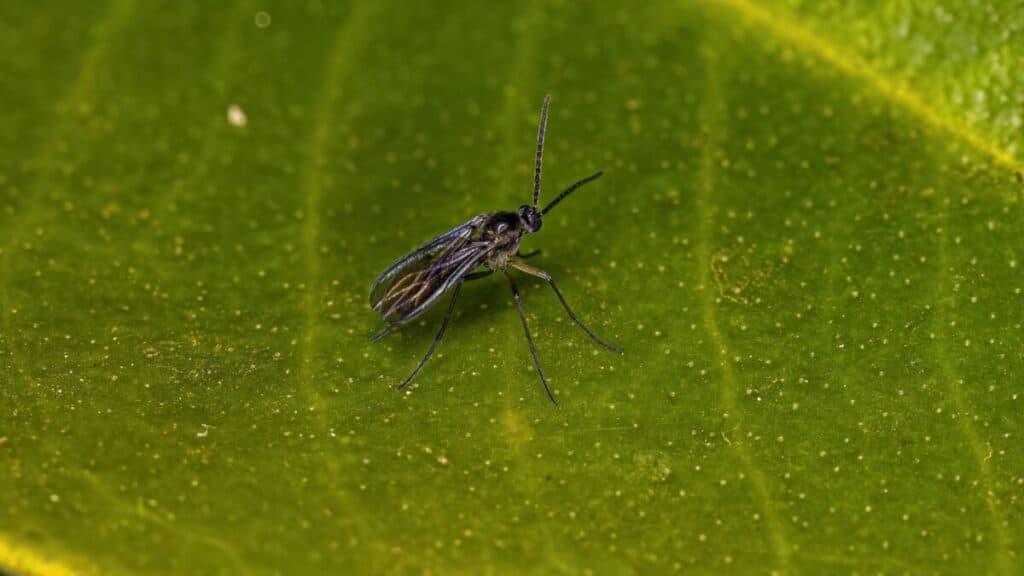
Fungus Gnats are also called soil gnats and can easily infest plant soil. These tiny bugs look very much like drain flies, measuring between 2-8mm. You’ll notice them in your soil and swarming around.
They will lay their eggs in the soil, and the tiny flies will emerge once they mature. The more moisture in your soil, the more eggs will hatch. They are often the result of overwatered plants.
Once hatched, the fungus gnats can swarm the plants in droves. If there are large numbers of larvae, more plant damage can occur. They feed on the roots and cause stunted growth. Thankfully, adult fungus gnats are rare and don’t feed off of plant tissue.
How to Get Rid of Fungus Gnats
Fungus Gnats can be quite a pain, but thankfully there are plenty of ways to get rid of them.
- Apple cider vinegar
- Sticky traps
- Insect spray
Apple Cider Vinegar
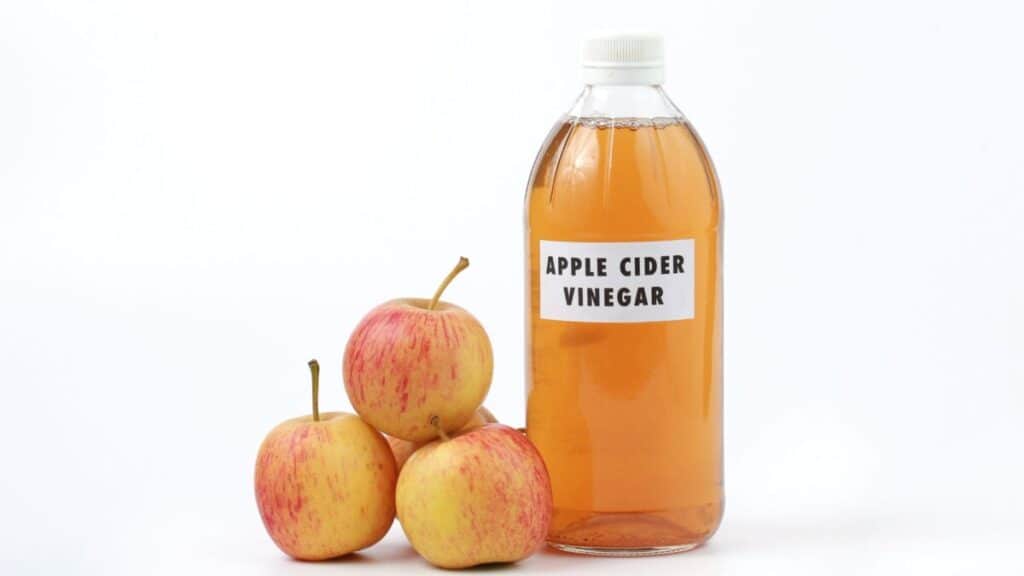
By using apple cider vinegar, you can easily defeat these pests. Fill a shallow dish with ¼ cup of apple cider vinegar and a few drops of liquid dish soap and put plastic wrap over it.
Poke a few holes big enough for the fungus gnats to fit through the plastic. Because they are attracted to the vinegar, they will fall into the container and drown in the soap solution.
Sticky Traps
Sticky paper and fly paper are other options to catch fungus gnats. The pieces of tape can be placed on wooden stakes and inserted into the affected soil where the gnats gather.
Insect Spray
If you want things to go quicker than fly paper, you can spray them with any flying bug killer. Some spray killers are natural, contain essential oils, and are fairly safe to use around your plants.
Flea Beetles
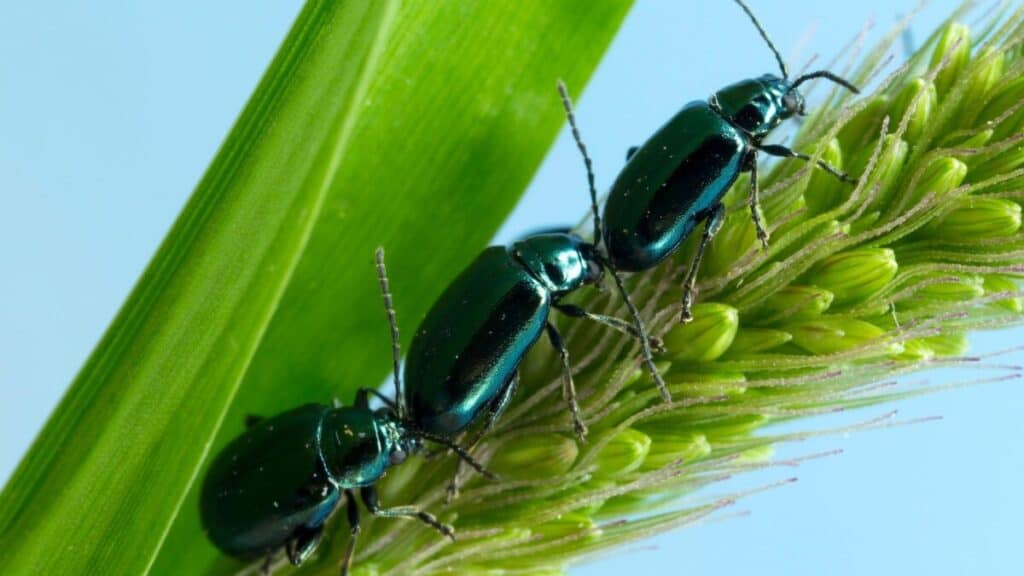
Flea beetles are another type of tiny black bag you may find on your plants; only these guys can jump and fly.
You can identify them by their oval and black body with a metallic-like shine. Some may have yellow stripes. They measure about 2.5mm long and will jump when disturbed.
Flea beetles will often attack your plants and vegetable alike. They will chew holes in the leaves of your plants, especially cruciferous vegetables.
You’ll notice holes in the leaves, or they may be devoured completely. They are also often found on tomato plants and flowering plants.
Damage from the flea beetle is usually seen on younger plants as they emerge out of the soil and begin feeding. The larvae are small and cream-colored, and when in the soil, they feed off the roots of the plant.
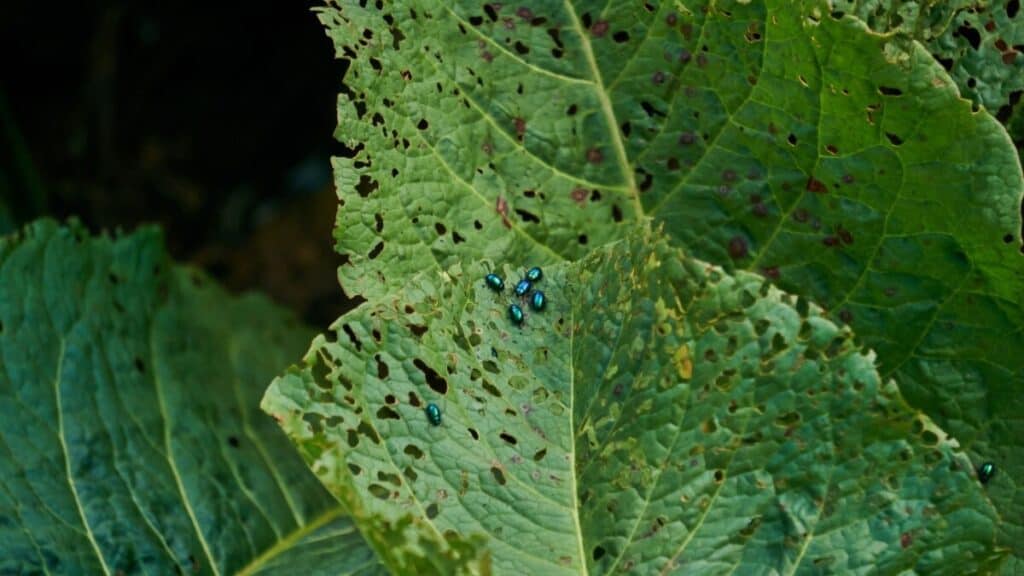
How to Get Rid of Flea Beetles
While the flea beetle can damage your plants, there are ways to combat them.
- Alcohol spray
- Sticky traps
- Talcum powder
- Insecticides
Alcohol Spray
Add two cups of isopropyl alcohol, five cups of water, and one tablespoon of liquid dish soap. Let it sit overnight, and then spray on the entire plant and any others you think are susceptible to being infested.
Sticky Traps
Sticky traps can be placed near your plants to capture the flea beetles when they jump about.
Talcum Powder
Often just dusting leaves with talcum powder can help to repel the beetles from gathering on your potato, tomato, and pepper plants.
Insecticides
As long as they are used early in the growing season, insecticides can be used to take care of flea beetles. Contacting your local nursery will ensure you are using the right product.
Black Spider Mites
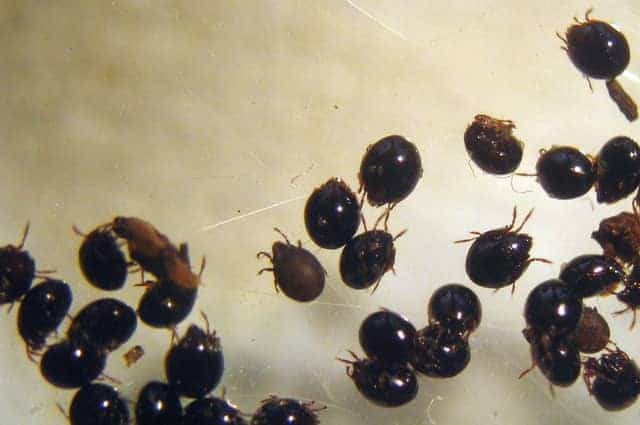
There are a few ways you can combat the black spider mite.
- Essential oils
- Dish soap
- Rubbing alcohol
- Garden hose
- Pepper extract
Essential Oils
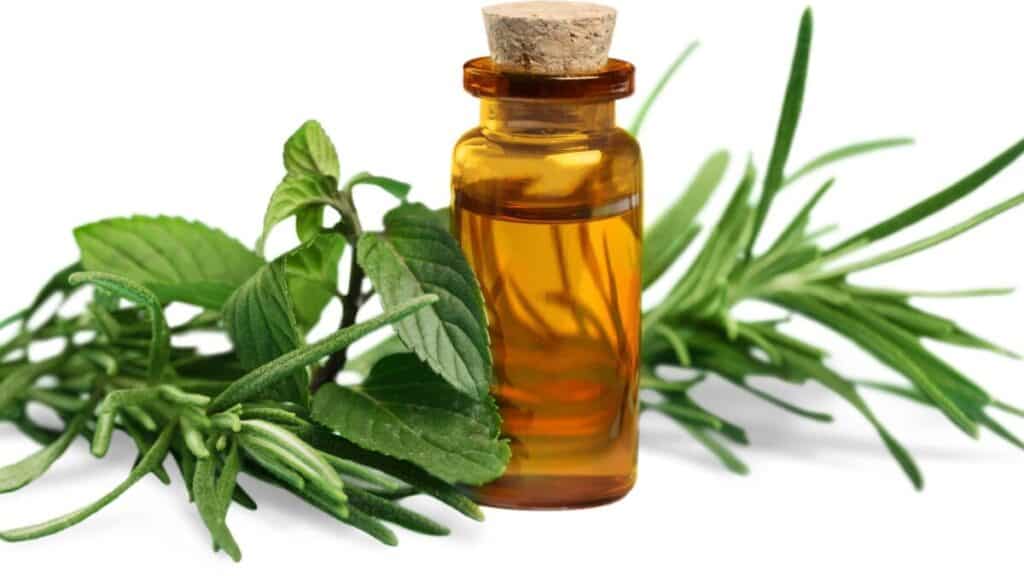
Essential oils can work well. Fill a spray bottle with water and a few drops of coriander, chamomile, spearmint, or rosemary essential oils.
Spray it on the affected leaves of your plants, concentrating on the places you suspect you have spider mites.
Dish Soap
Mixing three tables spoons of dish soap with a gallon of water can effectively kill black spider mites. Fill a spray bottle with the mixture and spray the affected leaves weekly.
Rubbing Alcohol
Regular household rubbing alcohol can be used to kill spider mites. Simply soak a cotton ball with the alcohol and wipe it across the affected leaves. Let it sit on the leaves for a few hours before washing it off with water.
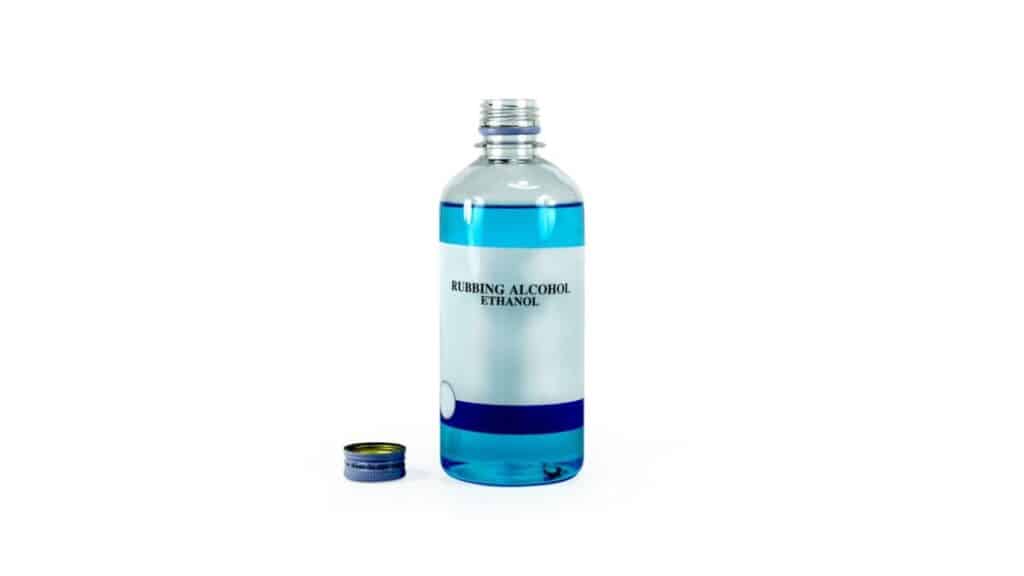
A Garden Hose
You can use your garden hose to spray the spider mites away, though this is usually a temporary solution as they tend to regather after each soaking.
Pepper Extract
The extract from several peppers is effective in killing spider mites. You can usually order the oils online; the ones that seem to work best are jalapenos, bell peppers, chile, and cayenne pepper.
Black Thrips
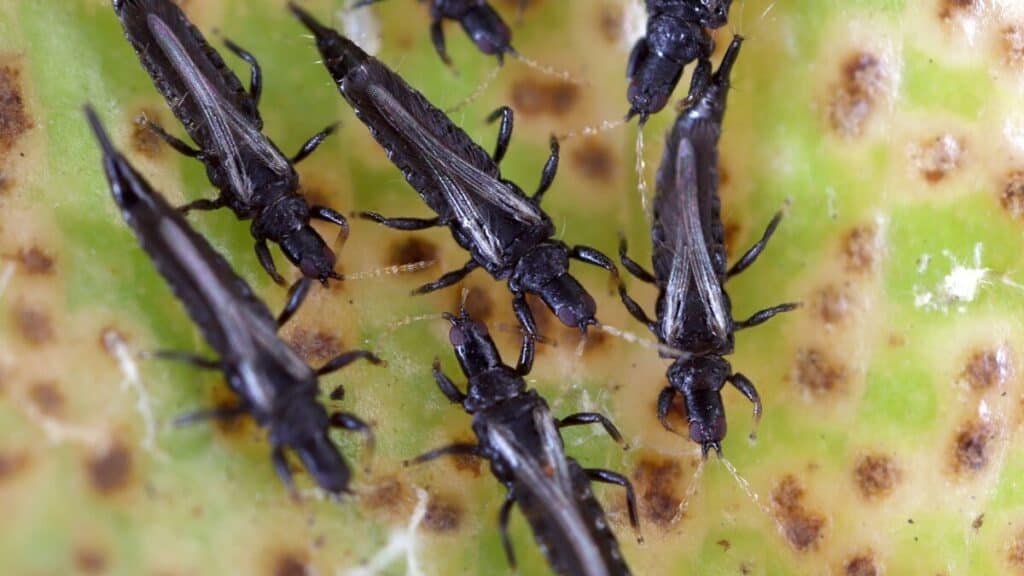
Black thrips are another type of black bug that can fly and cause a lot of damage to plants. They have very slender bodies with tiny wings and are so small they look like pinpricks. They are about 1mm in size.
If you had a microscope, you would see that they almost resemble tiny lobsters with two antennae and a pointed nose.
You will most likely notice the damage to your leaves before you notice the bug itself. Leaves will turn yellow and eventually wither and die, and plants that produce flowers will cease to do so.
If you take a sheet of white paper and place it under the leaves of the suspected plant and tap the leaves, the thrips will fall off and appear like black pepper.
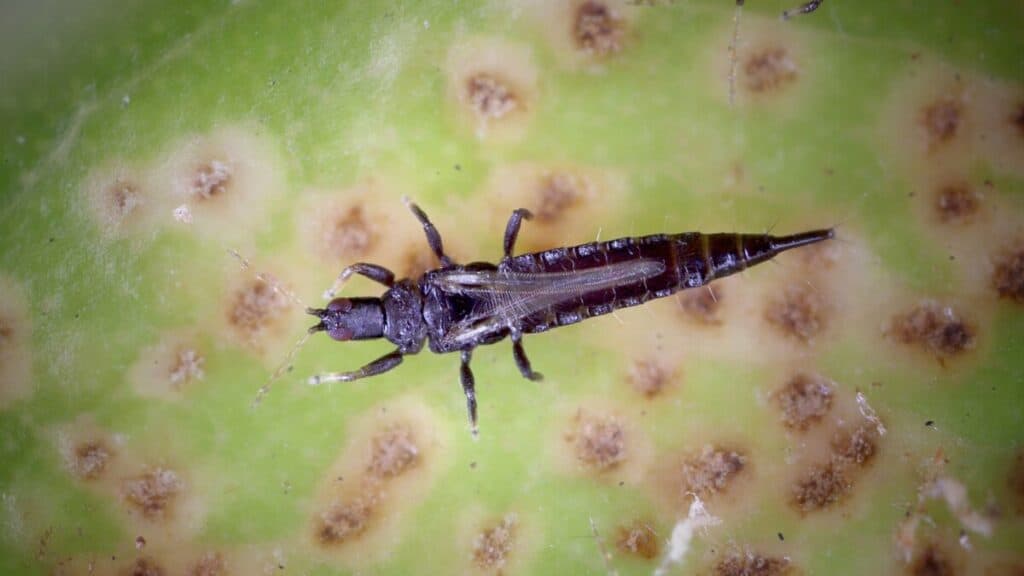
How to Get Rid of Black Thrips
There are several effective ways to rid your plants of black thrips.
- Neem oil
- Pyrethrin
Neem Oil
Neem oil is a natural pesticide and essential for gardeners. It can wipe out the bad bugs without hurting the good guys, like honey bees. It works by shutting off the insect’s hormones that make them want to eat.
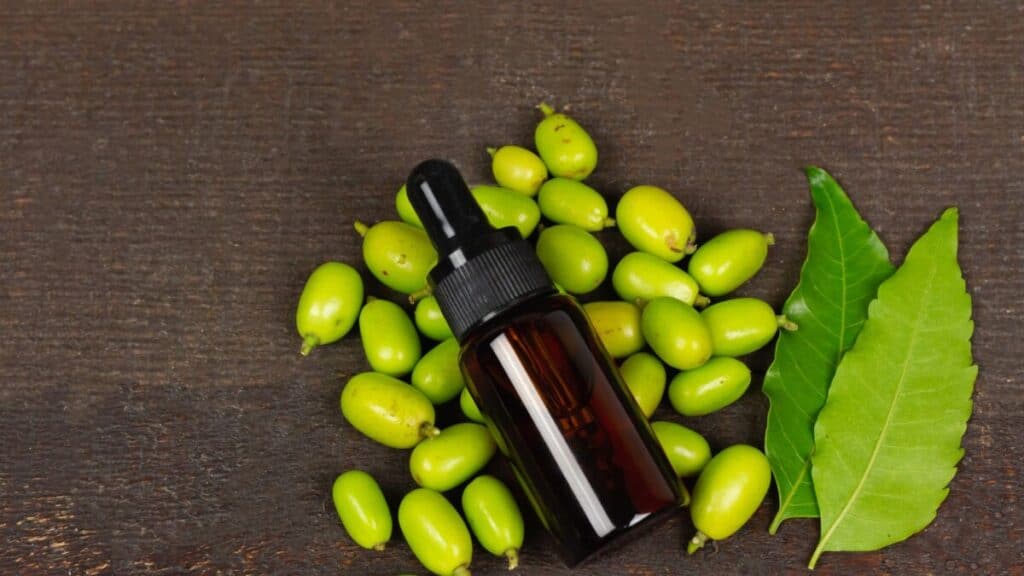
Rinse the thrips off your plant with a hose and spray with a mixture of 4 teaspoons of neem oil and two teaspoons of liquid dish soap with one gallon of water.
The plant absorbs the oil into its tissue and affects the bugs feeding on it, essentially killing them.
Pyrethrin
Made from chrysanthemums, pyrethrin is a natural pesticide that will help to get rid of thrips. You can purchase this from your local nursery.
It is usually spayed on the plants twice, with four days in between. You will want to read the labels and be cautious as this product can kill honey bees, so use it as a last resort.
Conclusion
If you have those annoying tiny black bugs on your plants, take a moment to identify them. And then you can arm yourself with the best tactics to destroy them.
Alright, that’s it for this article, here are a few hand-selected articles that you might also find interesting reads:
Tiny black bugs in kitchen cupboards – What To Do NextHow Do I Get Rid of Little Black Bugs in My House? 3 Easy Steps
Tiny Black Bugs In Kitchen? What They Are And What To Do!
Recent Posts
Tiny Black Bugs in Bathroom NO WINGS: What They Are and What to Do!
Finding tiny black bugs in your bathroom can be uncomfortable, to say the least. Especially if they are persistent, or they appear in very large numbers, which they often like to do. When it...
Tiny Black Bugs in Plant Soil - What Are They & What To Do About It
A short horror story: You get a new houseplant. You do your best to take care of it. You’ve ensured that it has the right soil, the right amount of sun, it gets enough water. And then one day, you...

